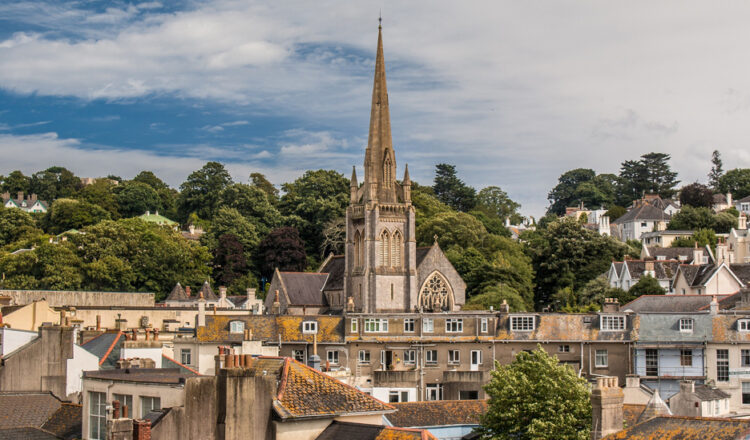It is a common refrain in schools that “history happened somewhere else”.
But all history happened somewhere and that “somewhere” is where you teach and where your students live.
This fact can ultimately change our students’ relationship with their lived environment.
We have the opportunity here to allow our students to see their towns, villages and streets through different eyes.
Why bother?
In her lecture to the Historical Association entitled, Local History: Approaches to the National Narrative from a Local Viewpoint, Dr Claire Kennan explains how a focus on local history can be used as a vehicle for civic pride.
She also explains how local history offers us an opportunity to go from “micro history” to “macro history” and vice versa.
Can we give our students an opportunity to see the national or even international narrative through a local lens?
In much the same way as using the personal story approach, a local focus can allow us to start small and go big – or, perhaps, go big and then narrow down to “what is local”; asking students if they can you see the echoes of the big narrative in the local area?
There is always a lot of talk in education about the power and necessity of “engagement” in the learning process.
We might ask what is engagement? For me it is getting students to care about the things in front of them.
We want students to love history; maybe they’ll love it more if they can see the echoes of it in their daily lives.
A third, but equally-important consideration comes from the work of Dr Michael Maddison and his plenary at the inaugural Practical Histories Conference.
Here Dr Maddison suggested the importance of having a series of “golden threads” that weave together your curriculum.
Local history can easily be one such thread; a unifying factor that is sprinkled throughout the curriculum and which therefore helps to give it cohesion.
My final reason as to why we should bother is simply because sometimes you strike it lucky! I was fortunate, shortly after moving schools, to discover that there had been a late Saxon/early medieval execution site within easy walking distance of our school.
This led to us forging links with our local archaeology team and to the writing of a new local history enquiry for the start of Year 7. It was also a neat way of helping us cover the part of the National Curriculum that requires us to cover material from before 1066.
Approaches
Assuming for a moment that I have succeeded in persuading you to build some local history into your curriculum. How should you start? Below are some (hopefully) simple suggestions.
Walk your area. Spend a Saturday morning wandering around and looking for clues. It might be graveyards, war memorials, street names, statues, bridges, pubs and churches.
When doing this, remember to also look up – sometimes the things that survive are not always at street level. For example, the Jews House in Lincoln is best appreciated by standing across the street and looking up; then you can appreciate the surviving medieval timbers.
OS maps are a great resource. For £28 a year you can have the whole country on your phone.
On OS maps you are going to find battle sites, barrows and tumuli, churches and graveyards, castle sites, canal routes. In short, places to go and visit and see what physical remains can still be found.
Do your internet research. Start with the Wikipedia page for your town. There is usually a history section. Obviously approach with caution and do your due diligence as these things are not always 100% accurate. But they can be a good source of leads to follow up.
Similarly, many towns have local history societies who themselves have websites and printed publications.
It is worth remembering here that you might need to be prepared for enthusiastic amateurs whose writings are a long way from what we’d want to put in front of students.
However, you can turn up some true gems. For example, the Street Near You website on World War One soldiers is an incredible resource.
It is often the case that someone in your local museum has been paid to do the very research that you are attempting to pursue.
It is always worth going and having a chat to the staff at your local museum or archive.
Archives in particular can be incredible sources of historical evidence and often have out-reach workers who are more than happy to engage with you and your school.
See, for example, the work of the National Archives at Kew.
As mentioned earlier local Archaeologists are another great resource for local history work. What they can point you at is the history that exists below our feet.
Often the traces of the past are not obvious in the built environment but archaeologists can point you at where they were and indeed will often have detailed site reports of digs in your area.
I have written about the benefits of working with local archaeologists in previous editions of Practical Histories.

Things that might drive you nuts
Firstly, the internet can lie! In my research I came across a wonderful description of the closure of our local Monastery by Henry VIII. In reality it was an alien priory closed by Edward I in 1294.
It takes ages. Research, research, research. Then, when you think it’s done someone will tell you about something you’ve not heard of before.
I finished what I thought was extensive research into Andover and wrote a new enquiry only to be informed by a member of staff that there had been a lock on Bridge Street for over 200 years.
Finally, as mentioned earlier in discussing archaeology, it can often be frustrating that the stuff you want to see is under a mile of tarmac and concrete. Apparently there were some wonderful Bronze Age barrows at the end of our school field. Sadly they are now lost forever under Portway industrial estate.
Final thoughts
The decision to add local history to your curriculum can be incredibly rewarding. It can add another golden thread to your work, forge connections with interesting people and bring the bigger historical narrative to life.
Moreover, that moment when you show a photograph of a place to a student and they reply “I live right next to that and I didn’t know…”. That is priceless.


Lead History Teacher at Harrow Way Community School, Andover, Hampshire.






